
5 things to know about Winnipeg’s big sewage problem
115 billion litres, 70 years to fix, $5.5 billion in lawsuits
Ridley Island in Prince Rupert, B.C., is a busy industrial hub that could get a whole lot busier if a proposed cargo sorting and loading facility goes ahead. The Prince Rupert Port Authority wants to build the facility, known as the Ridley Island Export Logistics Park, to support its expanding container shipping business.
The project would have a footprint of approximately 107 hectares — about a quarter the size of Vancouver’s Stanley Park — and would be built on what is now rainforest and wetlands.
Ridley Island is on federal land, which means it’s subject to the federal Impact Assessment Act. However, this project isn’t required to undergo a full environmental assessment due to its size and low potential of impacting the environment. Still, locals are concerned about the effects on the environment and human health.
“The port has been great for the economy and Prince Rupert, that is for certain,” Colleen Fitzpatrick, a member of the Prince Rupert Environmental Society, said in an interview. “However, with it comes a lot of changes to our community.”
The public can comment on the project until Sept. 25.
The port hopes to start building the Ridley Island Export Logistics Park in 2021, with it going into operation in 2023, according to the project description.
Here’s what you need to know.
The Ridley Island Export Logistics Park would be a receiving, storage and loading centre for a variety of goods such as cereals, grains, metals, minerals and lumber. It would be built at the south end of Ridley Island, across from Lelu Island.
It would include a facility to receive bulk goods and load them into containers, a facility to receive so-called break-bulk goods like lumber and a large container yard to receive and store empty containers as they return from destinations across North America. All of these facilities would be connected by rail infrastructure that would accommodate full-length trains with 100 to 120 cars.
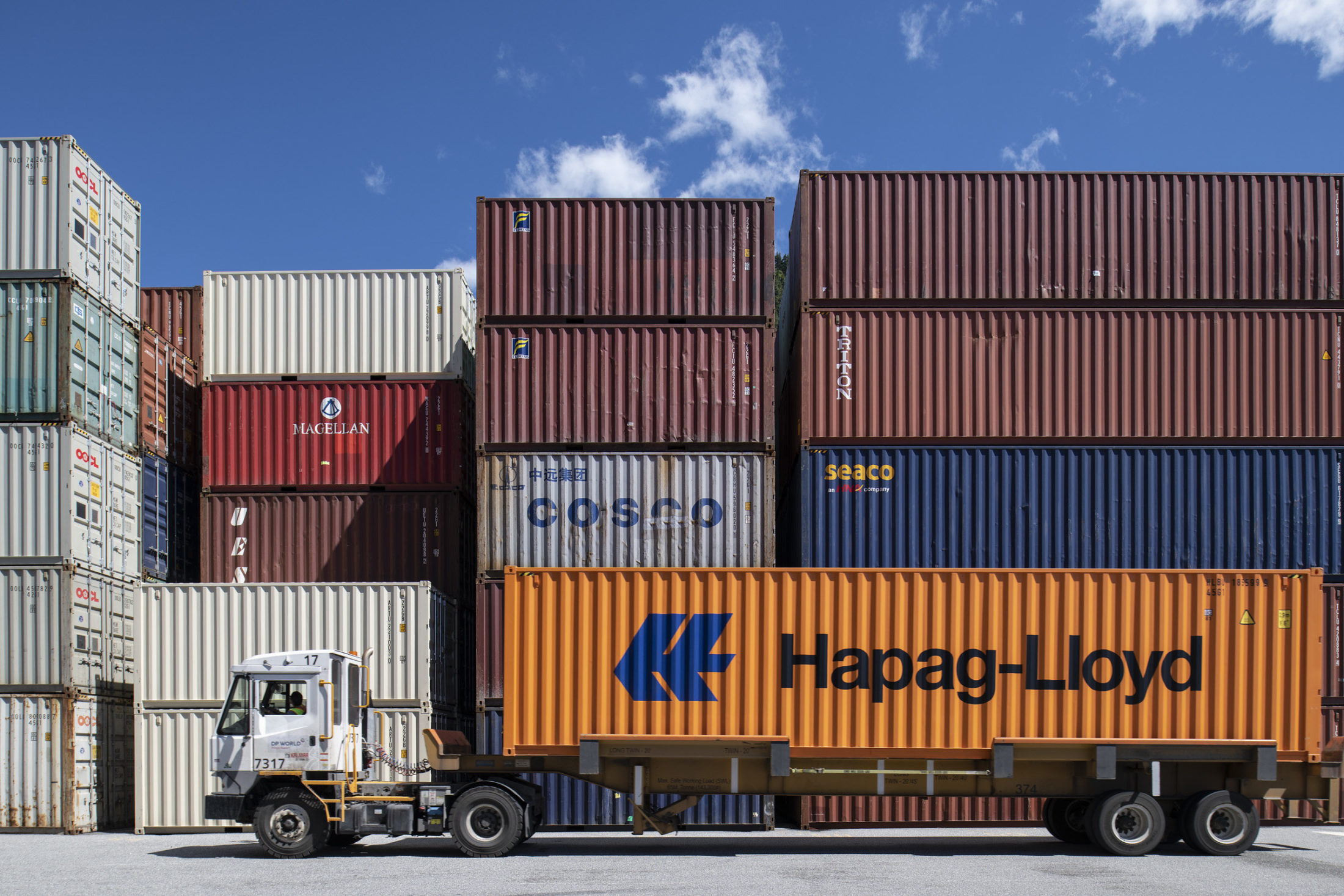
Trucks would move containers from the proposed Ridley Island Export Logistics Park to the Fairview Container Terminal for shipment overseas. Photo: Prince Rupert Port Authority
The goods would arrive by train from across Canada, be loaded into containers and be transported by train or truck to the existing Fairview Container Terminal, where they would be shipped overseas.
The trucks would travel on a port-owned road that follows the shoreline. This road, currently under construction, is being built to reduce industrial traffic through the city, including residential areas. The Ridley Island Connector Corridor is scheduled to be completed next year.
To support the expansion, CN is proposing to build a new rail bridge and causeway to service Ridley Island, increasing total rail capacity and helping offset rail traffic along Prince Rupert’s waterfront.
Last year, the federal government committed more than $150 million to support work on the rail network and other infrastructure projects to support the port’s proposal and overall expansion plans.
The port has been growing steadily since loading its first container ship in 2007.
Capacity in the container business is measured in 20-foot equivalents, or TEUs. The existing Fairview Container Terminal can handle 1.35 million TEUs per year.
In 2019, the port released a container terminal master plan outlining potential future development — including expanding the existing container terminal and adding a new one — which could add up to seven million TEUs. The Vancouver port, for comparison, can handle about three million TEUs per year.
As more and more goods are shipped through Prince Rupert, the port needs a place to receive raw materials, manage the increased activity and store empty containers.
The port had a record year in 2019, and 2020 is going strong despite the pandemic, Brian Friesen, vice-president of trade development and communications with the port, said in an interview. “We are certainly faring quite well this year to date, from a volume perspective, and with respect to growth and expansion, [the pandemic] has no real impact on projects that are currently under construction or those that are planned.”
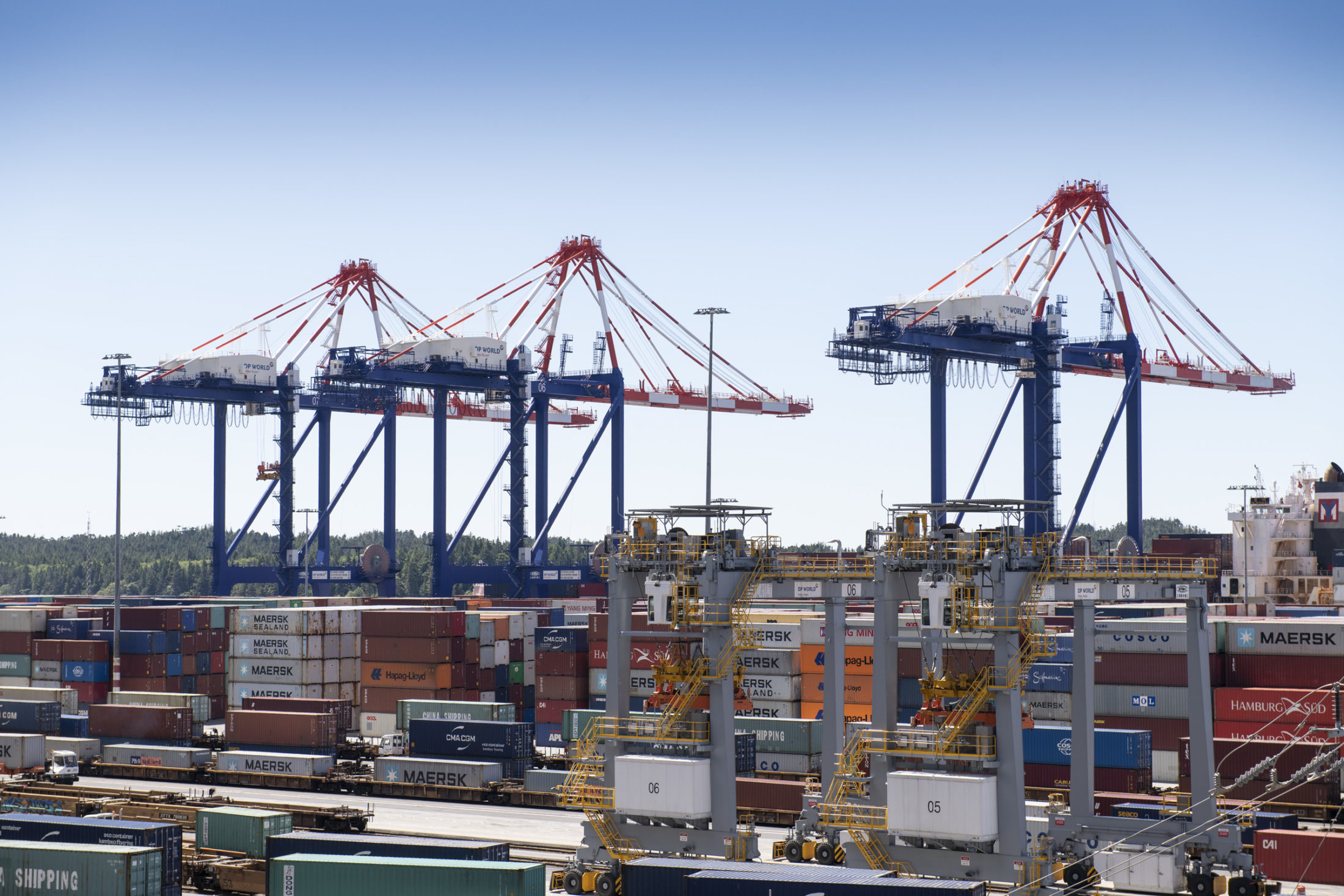
The Prince Rupert Port Authority wants to build a cargo sorting and loading facility to accommodate its growing container shipping business. Photo: Prince Rupert Port Authority
The logistic park would allow the port to diversify its business by storing and shipping a wider variety of products.
The proposed project would also support the port’s goal of having an equal flow of goods in and out. Containers imported from overseas arrive at the port full and are shipped by rail across the continent. “Most of them have to come back through Prince Rupert,” Friesen said.
When empty containers arrive back at the port, they are stored until they can be filled for export. “Those empty containers provide a real opportunity for Canadian exporters to fill those boxes and access markets overseas, particularly in the Asia Pacific region,” Friesen said.
The proposed project would fill empty containers already moving through the terminal, with the capacity to handle 400,000 TEUs and expand to 900,000 in the second phase.
During the first phase of the project, between 300 and 360 rail cars would arrive at the facility every day, requiring about 1,400 daily round trips by truck to the container shipping terminal.
If continued growth warranted a second phase, construction could start five to 10 years after completion of the first phase. This would add up to 180 more rail cars and increase the trucking to 2,000 trips every day.
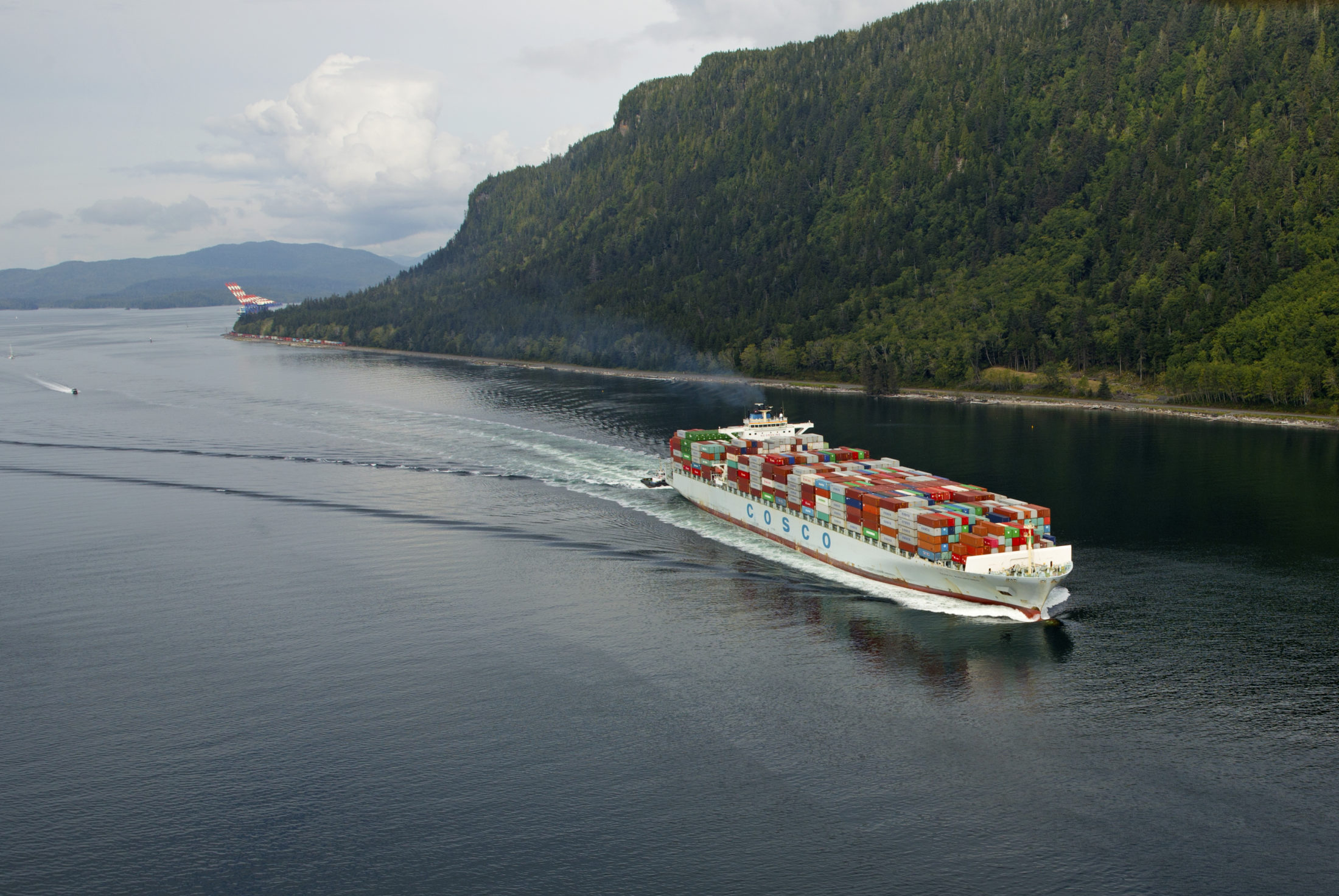
The Ridley Island Export Logistics Park would increase capacity at the Prince Rupert port by 400,000 20-foot equivalents per year. Photo: Prince Rupert Port Authority
Because the project doesn’t meet the threshold to trigger a full environmental assessment and Ridley Island is on federal lands, the Prince Rupert Port Authority is both the proponent and the federal authority responsible for coordinating what’s known as an environmental effects evaluation.
As part of this evaluation, Environment and Climate Change Canada, Fisheries and Oceans Canada and Transport Canada are working with the port authority to determine if the proposed project is likely to have adverse environmental impacts and prepare a mitigation plan.
When a proposed project undergoes an environmental assessment, stakeholders, such as First Nations, can access funding to undertake independent studies and provide input to help inform final decisions. These studies will not take place, but numerous studies that were done for previously proposed projects will be considered in the effects evaluation.
“There’s a lot of in-depth environmental research, baseline studies, et cetera that go along with each one of those projects,” Veldman said. “So even for projects that don’t go forward for whatever reason, the research that’s done within those contributes to a much deeper knowledge.”
The port identified 14 species listed as threatened, endangered or of special concern under the Species At Risk Act that potentially use the landscape that would be cleared to make way for the project, including the endangered little brown myotis bat, the threatened marbled murrelet and the western toad, a species of special concern.
The little brown myotis has suffered a sharp decline in population due to the rapid spread of a fungal disease called white-nose syndrome, which has killed 94 per cent of the bat’s Eastern Canada population. In Western Canada, the bats have managed to avoid the syndrome thus far, but according to the federal recovery strategy, the disease is spreading at a rate of 200 to 250 kilometres a day.
The south end of Ridley Island is designated by Environment Canada as potential critical nesting habitat for the marbled murrelet, but whether the bird actually uses the landscape is unknown. Veldman said the potential impacts on birds like the murrelet can be mitigated by scheduling construction plans to ensure no overlap with the nesting season.
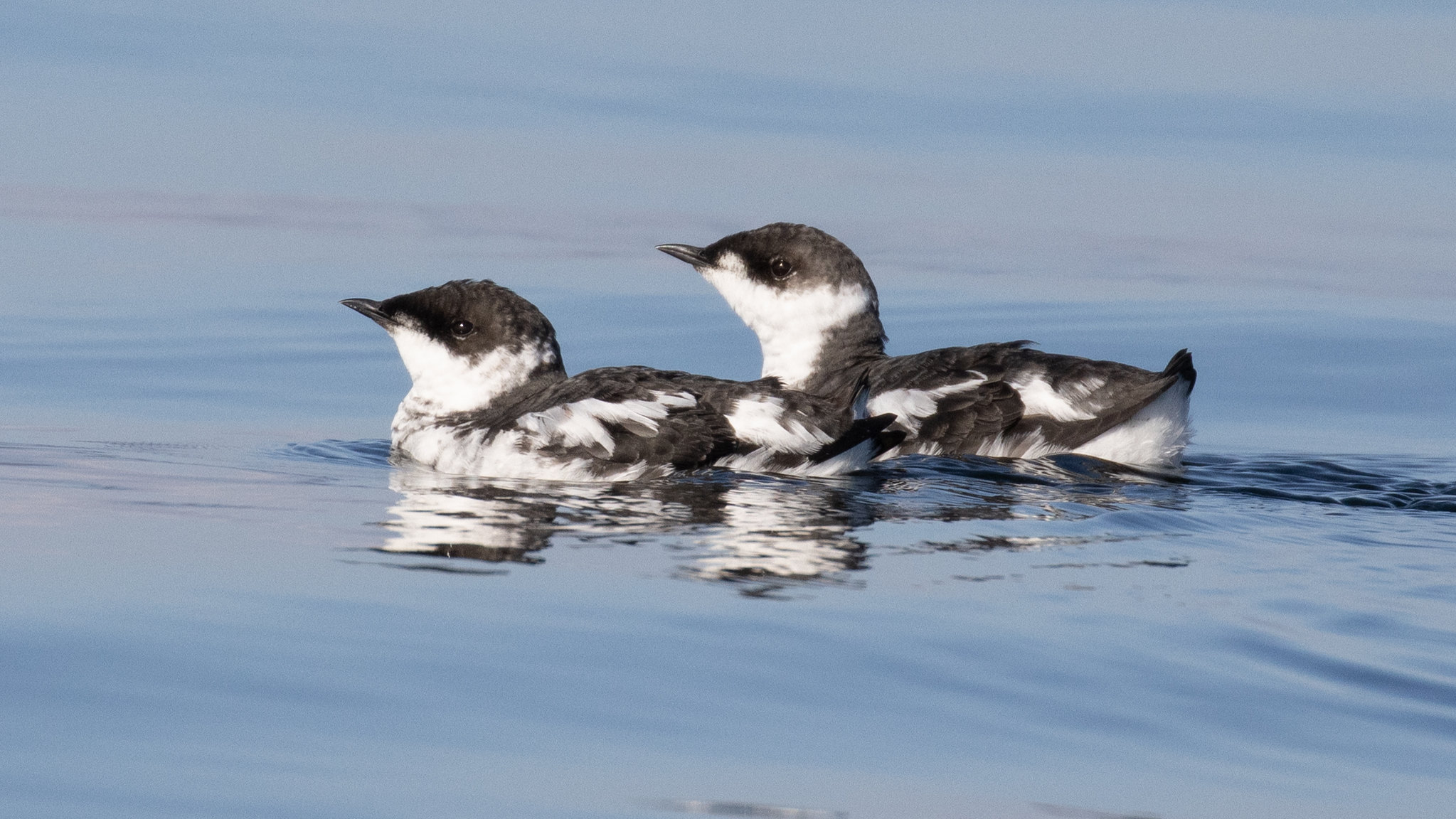
Marbled murrelets nest on land, mostly in trees. Environment Canada has designed the south end of Ridley Island as potential critical nesting habitat for the birds. Photo: Eric Ellingson / Flickr
According to the port’s report on potential impacts, much of the south end of Ridley Island is wetlands, a key habitat for western toads. One of the biggest threats to the species is loss of habitat or fragmentation of habitat due to urbanization and development.
The Narwhal reached out to Environment and Climate Change Canada with questions about its role in protecting these species but did not receive a response.
When a project has a negative effect on an ecosystem, the port offsets that impact by contributing to conservation and restoration projects elsewhere, whether locally or farther afield.
“We follow the principle that there will be no net loss in terms of habitat as these kinds of projects move forward,” Veldman said. Two to one is the ratio that we try to get to. So, for example, if you impact one hectare of wetlands, you’re aiming to develop or revitalize two [hectares] in some other area.”
For wetlands specifically, he said there are few projects in the Prince Rupert area the port can invest in, so in the past it contributed to a wetlands revitalization project on Haida Gwaii. In 2017, for instance, the port funded restoration work on the Delkatla Slough, a tidal wetlands at the north end of the archipelago.
Because the proposed facility would be on land, the potential impacts on the shoreline and marine life would be minimal, according to the port’s report. However, the project does have the potential to affect fish habitat through the construction of rail infrastructure crossing waterways. These effects would be mitigated by timing construction activities to coincide with low tides.
Residents of Prince Rupert and nearby Port Edward have been concerned about the increasing rail traffic and corresponding noise pollution for years. While the proposed project would divert some traffic away from Prince Rupert, the additional activity this project would bring to the area would mean significant increases in industrial noise overall.
In August, the City of Prince Rupert denied the port’s request for a temporary use permit to develop a 12-hectare container storage facility close to the terminal, in part because of residents’ concerns about noise, air quality and traffic.
Fitzpatrick, the member of the Prince Rupert Environmental Society who also lives on a street above the waterfront in Prince Rupert, said she is regularly disturbed by all the industrial noise. “Last night, I was awake from one o’clock in the morning ’til about three with the shunting,” she said in an interview.
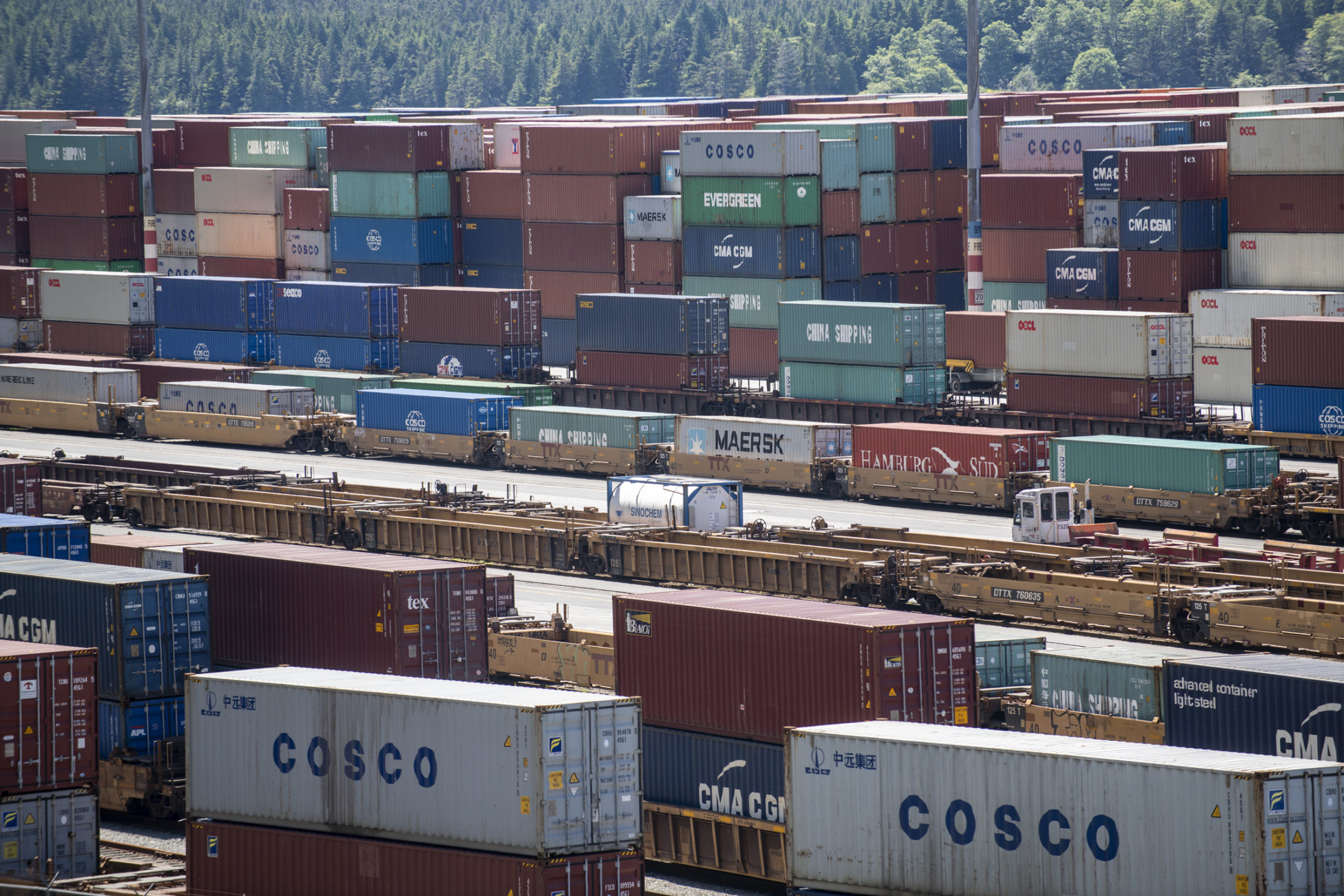
Prince Rupert residents are worried about increased noise from rail transportation and other industrial activities associated with the Ridley Island Export Logistics Park. Photo: Prince Rupert Port Authority
Shunting is the process of rolling rail cars together to form a complete train. If not done with perfect precision, it results in loud noises and strong vibrations. Shunting can literally shake a house.
The port follows guidance from Health Canada to keep its noise levels under maximum allowable decibel levels for day and night activities — 55 and 45 decibels, respectively — but averages those levels over a 24-hour period. People can access real-time noise data through an online monitoring system.
“I’ve had hits of like 100 or 110 dB,” Fitzpatrick said.
HealthLink BC recommends ear protection for anything above 85 decibels, and lists the sound of a chainsaw as an example of something in the 100 to 110 decibel range.
Repetitive loud noise can contribute to a range of physical and mental health effects. Headaches, sleep disorders, depression, hearing problems and even cardiovascular disorders have all been linked to noise pollution.
The rail network’s mainline into the area passes right through the town of Port Edward, which sits across Porpoise Harbour from Ridley Island. Veldman said the development would retain a “significant natural buffer” between the proposed project and the town.
“We don’t believe that there’s going to be a significant impact to Port Edward from this development,” he said, adding that the planning process includes an opportunity to look at potential impacts like noise and find ways to mitigate the impacts.
Fitzpatrick is supportive of the port and development in general but would like to see the noise issue addressed as it continues to expand. “It’s never been about getting rid of the port,” she said. “It’s about trying to live in a common area together.”
Several other projects have been proposed in the vicinity of the Ridley Island Export Logistics Park.
The proposed project overlaps the area that would have been used for the Prince Rupert LNG project, a proposed LNG terminal that was cancelled in 2017. Another project on Ridley Island, the Canpotex potash export terminal, was also axed in 2016, after nearly a decade of planning, investment and environmental assessment.

The proposed Ridley Island Export Logistics Park is close to Lelu Island (middle), which nearly became an LNG export facility, and Flora Bank (bottom right), an important juvenile salmon habitat that’s protected by a development moratorium. Photo: Prince Rupert Port Authority / Facebook
The proposed Vopak bulk liquids terminal, which is currently undergoing a provincial environmental assessment, would be located on Ridley Island, adjacent to the new development. Vopak Pacific Canada would be encircled by the logistics park’s rail and road network but would not otherwise be impacted by the development.
The cumulative impacts of all these developments is what worries residents like Fitzpatrick. “The story is big, big, big. There’s a lot of aspects to it, not just the noise.”
Updated on Sept. 10, 2020, at 11 a.m. PST: A previous version of this article suggested the Ridley Island Export Logistics Park is not undergoing an environmental assessment. While it is not subject to a full independent federal environmental assessment, it is undergoing an environmental effects evaluation. A previous version of this article also incorrectly stated that a second container terminal is expected to be operating by 2028.
Get the inside scoop on The Narwhal’s environment and climate reporting by signing up for our free newsletter. On a warm September evening nearly 15...
Continue reading
115 billion litres, 70 years to fix, $5.5 billion in lawsuits

Climate change, geopolitics and business opportunities power a blue economy

10 billion litres of sewage are dumped into Winnipeg’s lakes and rivers each year. Some...
